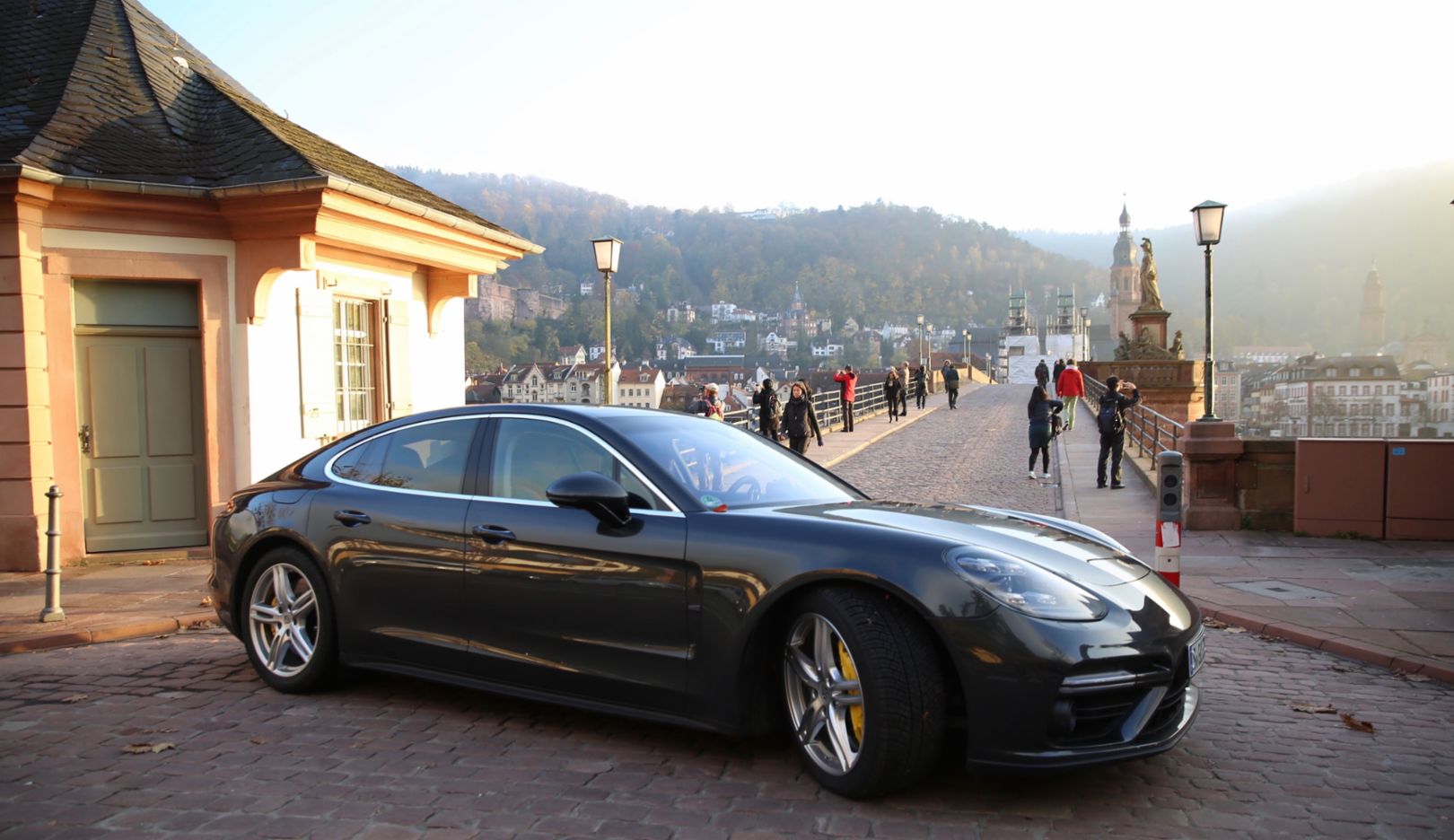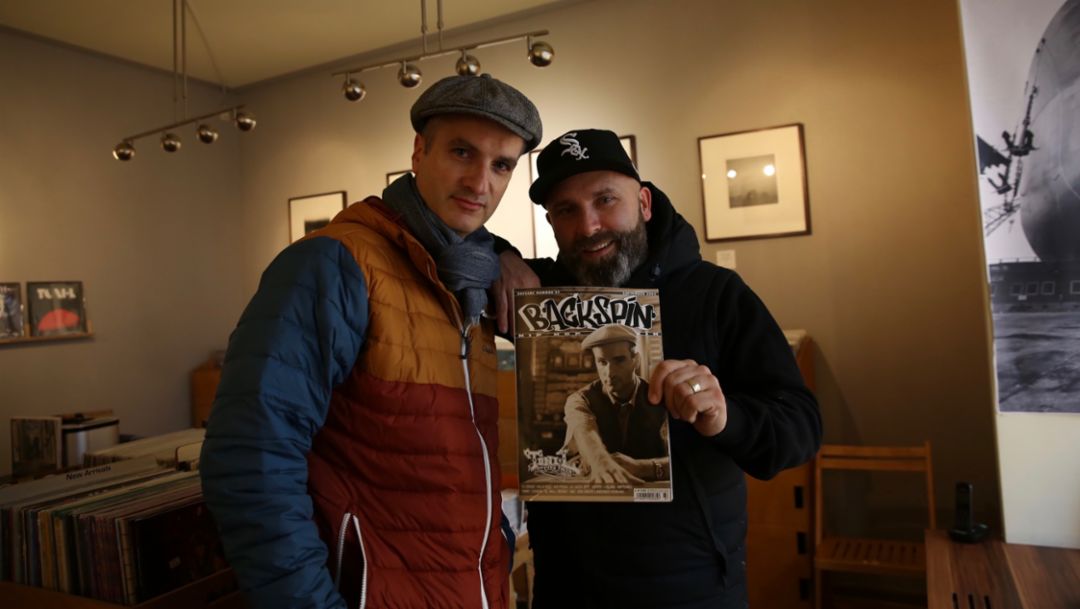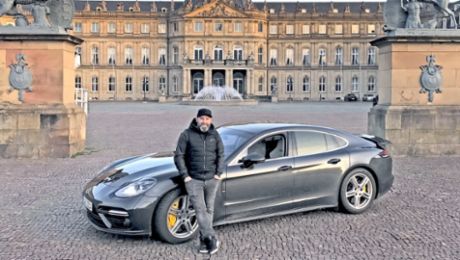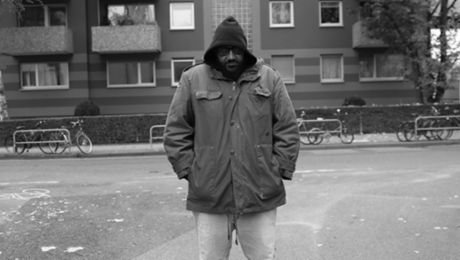Six cities, ten artists, a car and a good deal of rap: In a series of guest interviews on Porsche Newsroom, Niko Hüls, boss of the German hip-hop magazine Backspin, reports on his road trip across Germany. More impressions can be found on Instagram and Twitter using the hashtag #porschexbackspin as well as on the BACKSPIN TV YouTube channel.
“Advanced Chemistry”, released in summer 2016, is the title of the highly acclaimed fourth studio album from Beginner, rap crew centred around Jan Delay, Denyo and DJ Mad. On this hugely successful record by the boys from my hometown Hamburg, the trio pay homage to 1990s “deutsch rap” – and specifically the group with the same name as the record led by Toni-L, Torch, Linguist, Gee-One and DJ Mike MD. In the early years of German hip hop, Advanced Chemistry, or “AC”, became the voice of a growing youth culture and the reason why successive generations would choose this culture to express themselves – and build a career. The fundamental hip-hop concepts of rap, DJing, breakdancing and graffiti have always remained at the centre of this culture.
Advanced Chemistry: greater than the sum of its parts
Advanced Chemistry from Heidelberg was not primarily a pure rap crew, more an amalgamation of different elements of the culture, which essentially formed the blueprint for proper understanding of hip-hop. The joining together of different molecules to become more than the sum of the individual parts – this is the meaning behind the band name, which originated in the UK and under which the 1992 single “Fremd im eigenen Land” (Foreign in my Own Country) was released, the first real hit for underground “deutsch rap”. It's a matter of honour that Heidelberg and Toni-L, aka "The Godfather", should definitely feature in my hip-hop journey through Germany.
“I have a green passport with a golden eagle on it…” – with this opening line, German-Italian Toni-L, German-Haitian Torch and the rest of the crew would not only shape early “deutsch rap” history, but also create a political symbol for a free Europe. The movement was firmly rooted in Heidelberg, which – thanks to AC associates the Stieber Twins and Boulevard Bou – to this day is still a stronghold of German hip-hop culture.
Early years, old school
For our road trip in the Porsche Panamera, it was without question that the city on the Neckar river simply had to be part of the route. We wanted to visit those places where hip-hop put down its roots. Places like the small record shop in the old town, where probably the most important German rap albums are lovingly curated on vinyl. Or places such as the Karl Theodor Bridge, where the video for “Foreign in My Own Country” was filmed, or the alley featured on the cover photo for the single.
.@nikobackspin is on its way to present the roots of German hip hop culture. Stay tuned for more! #porschexbackspin #workdrivebalance @allesbackspin pic.twitter.com/SVZZdoQXni
— Porsche Newsroom (@PorscheNewsroom) 14. November 2017
To complement our visit, Toni-L and his father had organised their own little tour of Heidelberg for us, taking in the picturesque old town with its castle ruins to the prestigious university, via the former home of Toni-L, the theatre where he is once again on stage and his brother-in-law's cocktail bar.
It feels like this city in Baden-Württemberg exudes heritage from every corner. What had its beginnings in Heidelberg at the end of the 1980s cannot be dismissed as just the “early years of hip-hop” (and nowadays known as “old school”), as it has shaped more than just one generation of German music history. What was being celebrated by Toni-L, Torch and the rest of the band on the streets of the old town was the birth of a youth movement which is stronger today than ever before.
#WorkDriveBalance & the road trip playlist
Whether you're in a jam or cruising along, music can be a crucial factor in striking the right work-drive balance – just like the right vehicle. The pleasure of being behind the wheel can turn a stressful journey to an appointment into a positive experience. The Panamera is both a comfortable saloon and sports car rolled into one – the perfect vehicle for the Porsche hip-hop tour. To create the right work-drive balance, Niko Hüls has also created a playlist featuring “Foreign in my Own Country” from Heidelberg legends Advanced Chemistry.
Save the Date
While upon his road trip, Niko Hüls met many interesting characters, had in-depth discussions and gathered a great deal of information about the history of German hip-hop. You will be able to see the results in a video documentary co-produced by Porsche and Backspin TV: “Back to Tape” will be released in Spring 2018.
The author
Niko Hüls a.k.a. Niko BACKSPIN has been a fan of hip-hop since the early nineties. It was around the turn of the millennium that he made his passion into his job: Journalist, moderator and boss of BACKSPIN, Niko busies himself with urban youth culture and is always on the lookout for good stories and interesting people. Hip-hop as an art form and approach to life is Niko’s philosophy.
Consumption data
Panamera Turbo: Fuel consumption combined 9.4 – 9.3 l/100 km; CO2 emissions 214 – 212 g/km




